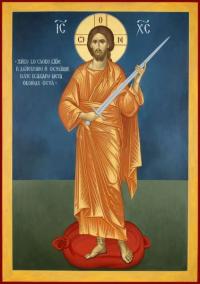
The prologue to the gospel of John introduces the reader to the themes of the gospel which he is about to encounter. The last gospel was written probably around 100 AD and therefore is the product of a longer reflection. The synoptic gospels all begin in the lifetime of Jesus: Mark at his baptism, Matthew and Luke at his birth. John however goes back to the beginning: “The Word was with God, and the Word was God.”
Through God’s Word, creation came into being (Genesis 1). Throughout the Old Testament God spoke through prophets; but in Jesus, the Word made flesh, God spoke in person. John talks about light and darkness. The first creation was light, and the Word made flesh brings light into the darkness of sin. During his lifetime he was rejected by many of his own people but accepted by some.
John’s purpose in writing his gospel is to proclaim the identity of Jesus. As a skilful dramatist he uses his characters and their interactions with Jesus to do this. Beginning with the Baptist who describes him as the “Lamb of God” he continues with the first apostles, his mother at Cana, Nicodemus, the Samaritan woman and Martha, who makes the same profession of faith as Peter: “Yes Lord, I have come to believe you that are the Messiah, the Son of God, the one who is coming into the world” (John 11:27). The revelations continue through the meeting with Pilate, where Jesus states that he is indeed a king, and the crucifixion, attested to by an eye-witness, to the final affirmation of Christ’s divinity after the Resurrection.
“But these are written that you may believe that Jesus is the Messiah, the Son of God, and that through this belief you may have life in his name.” (John 20:31)